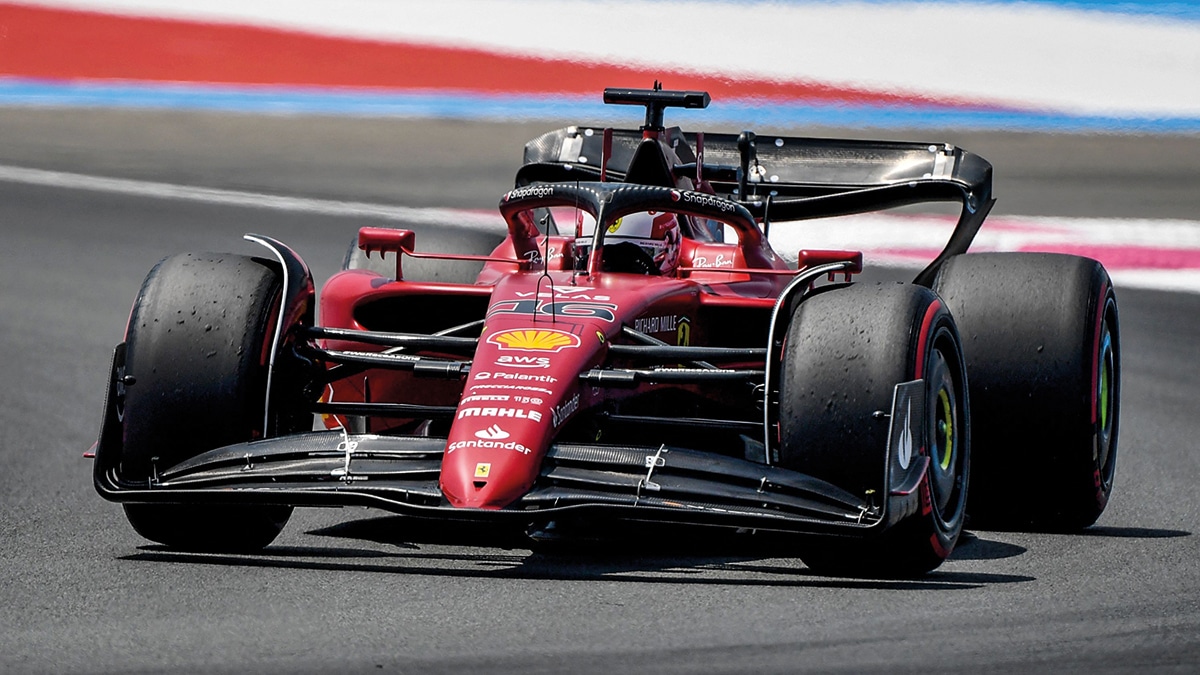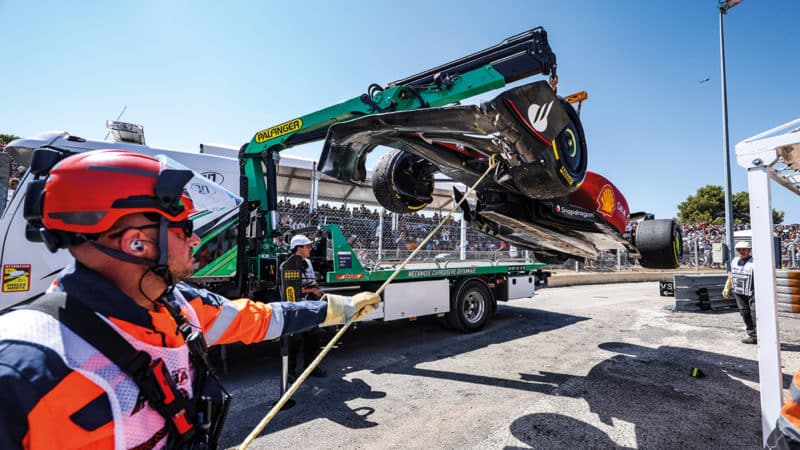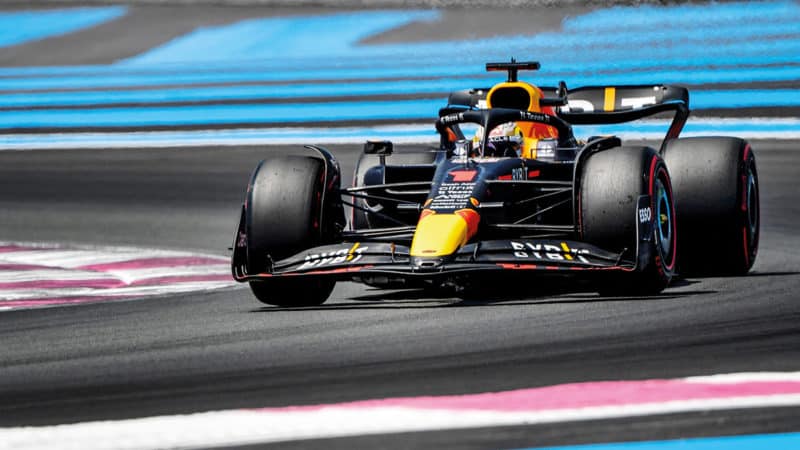Crossing the tunnel channels
Red Bull and Ferrari are fencing for position – but the fencing is only visible when an errant car is rescued. Mark Hughes explains

Ferrari’s car has benefited from a cornering advantage this year, but floor changes hint the team is searching for more straight-line speed
SYLVAIN THOMAS/AFP via Getty Images
It is notable how the development of the Red Bull and Ferrari, comfortably the two fastest cars of the season, seems to be influenced by their relative strengths and weaknesses. The Red Bull RB18 has in general displayed a straight-line speed advantage over the Ferrari F1-75, which in-turn has usually shown a cornering advantage.
Both teams brought significant upgrades to Paul Ricard, both of which centred on changes to the tunnel inlets. The entries to the underbody tunnels are divided up by three regulation fences, which direct the flow either to the rear of the tunnel (via the inboard fences) or out-washing away from the car (via the outboard fences).
There is a balance to be struck between the two sets of flow. Both create downforce but in different ways, and with a different emphasis between the front to rear balance of the downforce.
A look at the underbody will show that the outer channels are taking the air away from the tunnels into the freestream outside. This flow is being accelerated by the lower-pressure area of the tunnel as a whole. The air over the upper surface of the exposed floor in this area will be moving more slowly. This creates a downwards pressure differential on the floor itself at this point. The inboard channels carry the air to the throat of the tunnel further back, creating negative pressure through the venturi effect. The throat is towards the rear of the tunnel, with the air then released into the diffuser area.

Underbody tunnel fences direct air either to the venturi or outboard, tweaking fore/aft balance
Marc de Mattia / DPPI
There is only so much air to work with as it enters the tunnel so how the fences direct that airflow determines how much flow is fed to the throat of the tunnel and how much to creating downforce from the exposed area of the floor. This influences the distribution of the downforce front to rear.
Up until Paul Ricard, Red Bull ran its outermost fence super-close to the barge board, and the interaction between those two surfaces would have the effect of accelerating that outwash airflow very hard and creating good downforce directly on the floor. For Ricard it spaced them much further apart, implying less emphasis to the front of the car.
Why might Red Bull have wanted a more rearwards centre of pressure? It wanted to run a small rear wing at Ricard. Thermal tyre degradation around the long, fast corners in the high temperatures was expected to be significant. Red Bull believed that running maximum downforce would take too much energy from the tyres and induce thermal degradation, which means the structure of the tyre can no longer support the loads. A better way of running the car here, it believed, would be to emphasise straight-line speed and not to have too much downforce using up the energy of the tyres too quickly.
So a smaller rear wing was chosen. But this obviously would move the centre of pressure forwards, potentially giving the car a difficult balance into and through the fast corners. The solution was to compensate with an underbody giving a more rearwards centre of pressure.

Red Bull’s path has been the opposite. Rapid on the straights, but giving away time in the turns. Its floor development seeks to rebalance downforce
SYLVAIN THOMAS/AFP via Getty Images
Ferrari’s change was part of its development programme and not specific to Paul Ricard. It heightened the roof of the inboard entry to the tunnels, with a stepped- down section then to the outboard tunnel entries which retained their previous height.
The aim, said Ferrari, was “improving the overall aerodynamic performance through the entire car operating envelope”. The higher tunnel inlets would make a greater volume of air available to be fed to the throat of the tunnels further back. Although this would, in isolation, create a more rewards centre of pressure, it could also be used to maintain the same balance with a smaller rear wing, as the team seeks to offset Red Bull’s usual straight-line speed advantage.
Doing this but keeping the same strong front end which has almost certainly played its part in Charles Leclerc’s scintillating qualifying performances this year will be a challenge. Just as will be combining Red Bull’s search for more downforce with the sort of forward-biased balance that Verstappen craves.

